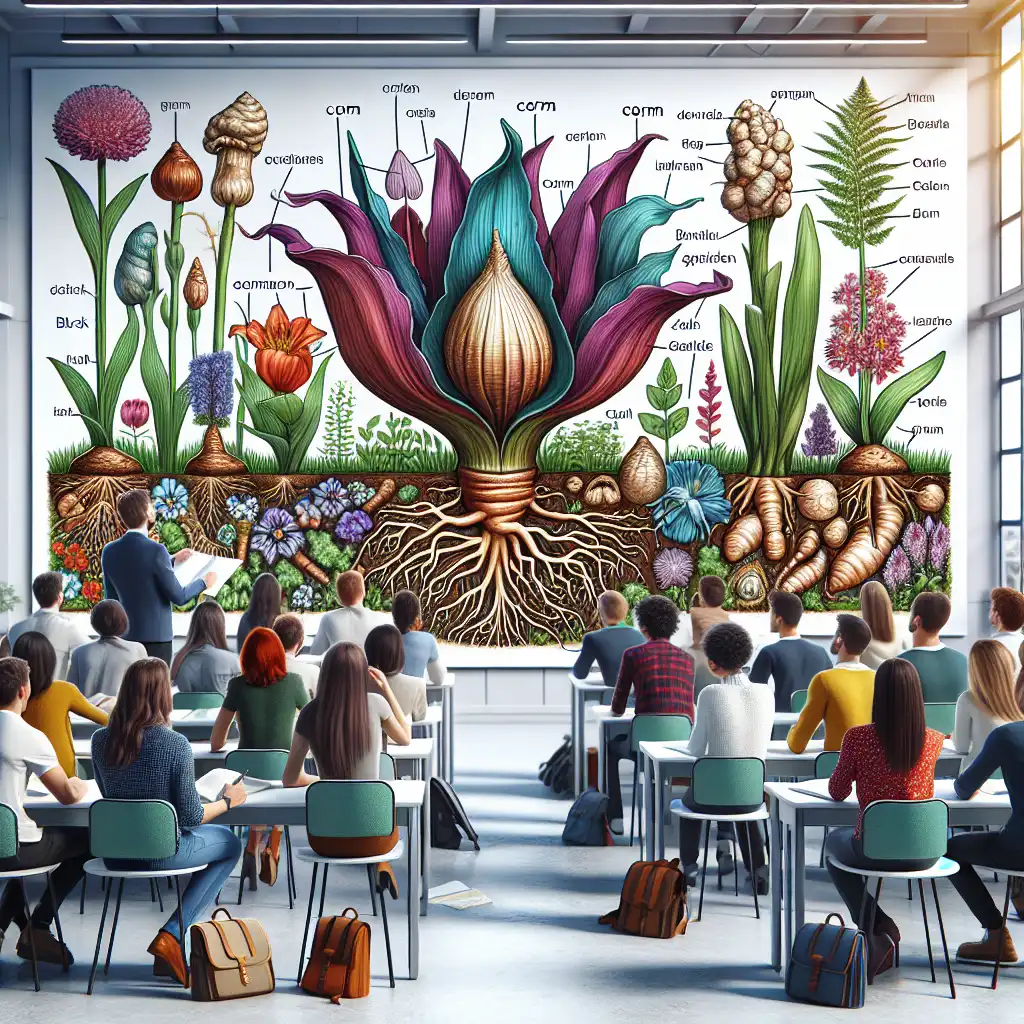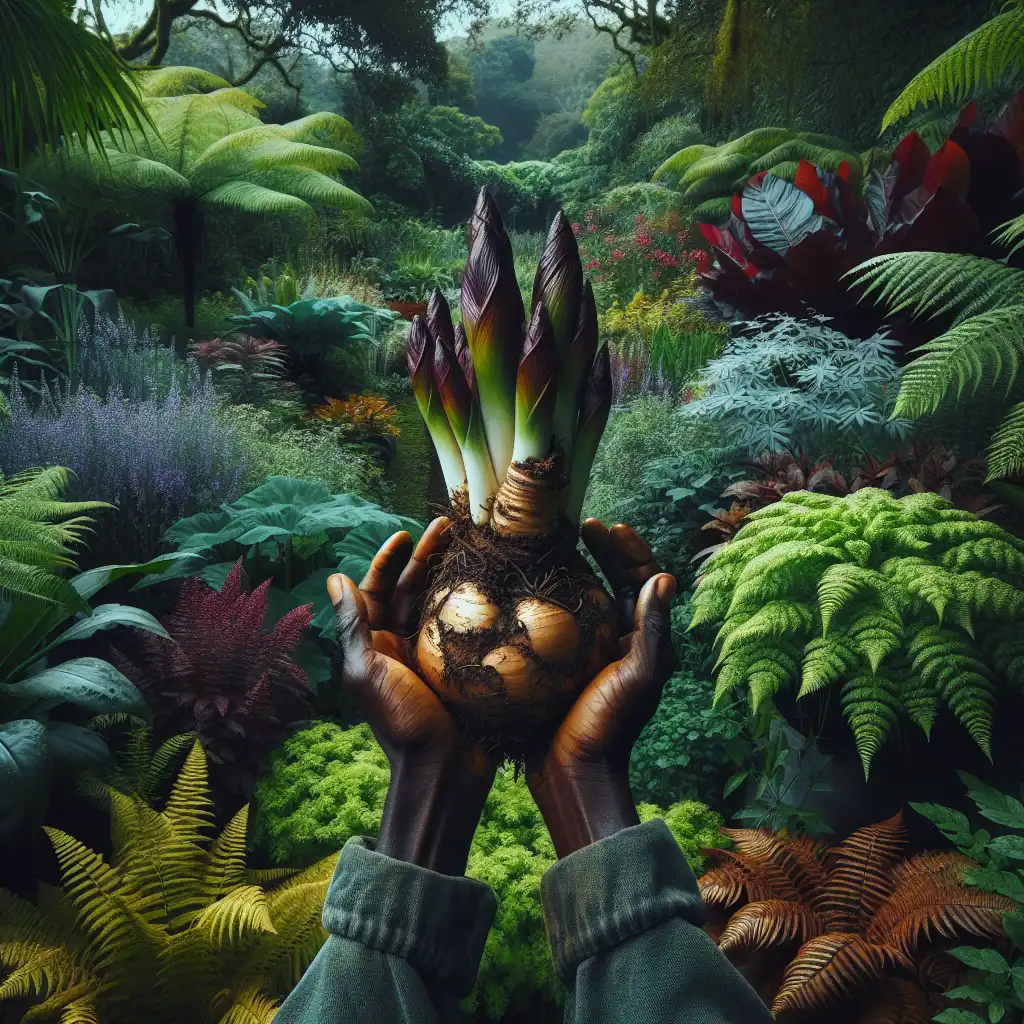
Corm
Botanical Term
Corm is used in botany and gardening. It's less common in everyday conversation.  During the botany class, we learned that a corm is a type of underground plant stem.
During the botany class, we learned that a corm is a type of underground plant stem.
Storehouse
Think of a corm as a storage unit for plants, keeping food to survive winter and dry periods.  The gardener explained that the corm serves as a nutrient storehouse for the next growing season.
The gardener explained that the corm serves as a nutrient storehouse for the next growing season.
Not Always Visible
Corms are usually underground, so you might not see them unless you're planting or studying plants.  To divide the plants, we had to dig up and split the corms.
To divide the plants, we had to dig up and split the corms.